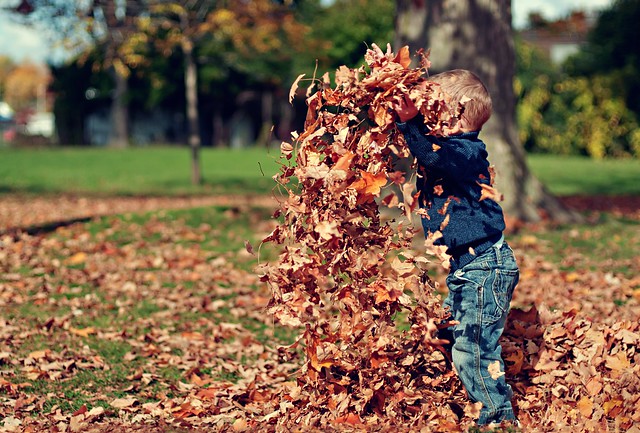
¡Bienvenido al otoño! Aunque el clima está comenzando a ser más fresco y los días más cortos, hay muchas actividades divertidas que puede realizar con su familia y amigos. Whether you’re planning to do something outdoors like apple picking, hiking, or camping, or have a fun cookout or potluck event such as tailgating at a football game, it’s important to handle your food safely. By following our fall food safety tips, you’ll avoid FALLing ill with foodborne illness.
General Fall Food Safety Tips
No matter what you’re doing this fall, there are a few tips that are always important to follow when handling food.
Before you prepare or eat any food during your fall activities, you should always start with clean hands, utensils and surfaces. Handwashing is the first and easiest step to avoid foodborne illnesses. A USDA study shows that 97 percent of the time participants should have washed their hands they did not do so correctly or at all. This poor hand hygiene caused participants to cross-contaminate other spice containers, refrigerator handles, even ready-to-eat foods and other areas of their kitchen with a harmless tracer bacteria. Make sure you wash your hands for a full 20 seconds and dry them with a clean towel. For certain activities where a sink with running water is not available, you can use disposable moist towelettes to get your hands nice and clean.
When handling raw meat or poultry items, always start with clean plates. If preparing ready-to-eat items as well, make sure you use separate plates and utensils for the raw vs ready-to-eat items. In addition, never put cooked food on a plate or tray that held raw meat or poultry.
The two hour rule is another important guideline to follow when you have perishable foods at your fall activities. Bacteria thrive in temperatures between 40°F (4°C) and 140°F (60°C), doubling in number in as little as 20 minutes. If foods have been sitting at room temperature for under two hours, you have a few options. You can place foods in the refrigerator to save for later or change the cold sources to continue keeping the foods at a safe temperature. If perishable foods have been sitting out at room temperature for more than two hours, you should throw these foods out.
Here are some tips for your specific fall fun activities:
Outdoors (Hiking, Camping and Apple Picking):
- Have a cold source for your perishable items to prevent bacteria from multiplying to dangerous levels.
- Frozen gel packs or frozen water bottles work well as cold sources.
- Pack non-perishable items for easy grab-and-go options.
- Trail mix, energy bars, granola bars, canned tuna, etc.
Tailgates
- Oftentimes when heading to a tailgate, you'll need to pack foods that you want to grill later in a cooler. When packing the cooler with these items, make sure you're packing the cooler with ice or frozen gel packs.
- To prevent cross-contamination, wrap raw meat and poultry items separately and place at the bottom of the cooler to avoid having juices drip on ready-to-eat foods.
- Remember your food thermometer! A USDA study shows that 66% of participants did not use a food thermometer to check the internal temperature. The only way to know if your food is safe to eat is using the food thermometer to check the internal temperatures. Color and touch are never an indication of doneness.
- If grilling or cooking meat or poultry at your tailgate, make sure you are cooking it thoroughly.
- Foods will brown faster on a grill, but color is never an indicator of doneness, so make sure you are using a food thermometer to check that it has been cooked to the correct minimum internal temperature.
Fall Potlucks
- When serving foods at your potluck, remember to keep hot foods hot and cold foods cold.
- Keep hot items hot by using a slow cooker on the “warm” or “low” setting, or use chafing dishes with a heat source.
- Keep cold items, like dips, cold by placing the serving dishes in a bed of ice.
- Consider putting foods out in batches to ensure they aren’t staying out longer than the two-hour time limit.
By following these food safety tips, you'll be prepared for any fall event you choose. Keep you and your friends and family safe from foodborne illness, and make sure that the leaves are the only thing falling this season.

